Moniek Bloks's Blog, page 36
October 6, 2024
Five royal uncle-niece marriages (Part one)
Royal uncle-niece marriages happened several times over the years. These marriages often happened for strategic reasons, such as land or power, but also because of rank and status. There simply weren’t enough others of high enough rank for marriage. The offspring of such marriages often suffered from genetic abnormalities, such as the famous Habsburg jaw. Quite often, these children did not survive to adulthood.
Here are the first five:
1. Clementina of Austria & Prince Leopoldo of the Two Sicilies, Prince of Salerno
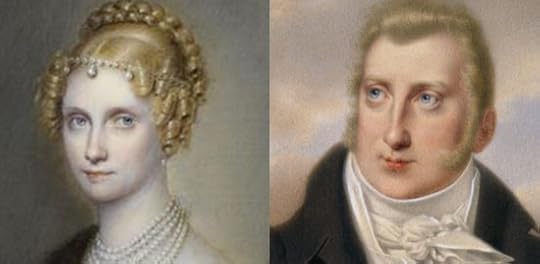 (public domain)
(public domain)Clementina of Austria was born on 1 March 1798, the daughter of Francis II, Holy Roman Emperor, and Maria Theresa of Naples and Sicily. Her parents were double first cousins, and they had all their grandparents in common.
Clementina married her mother’s younger brother, Prince Leopoldo of the Two Sicilies, Prince of Salerno. He was born on 2 July 1790, the son of King Ferdinand IV of Naples and his wife Maria Carolina of Austria. The age difference was thus “only” 8 years between uncle and niece. Clementina was 18 years old at the time of her wedding. The newlyweds moved to Naples and went on to have at least four children, of which just one survived to adulthood. Two children died shortly after their birth; one lived for three weeks. Their only surviving child was Princess Maria Caroline of the Two Sicilies, who ended up marrying her paternal first cousin, Prince Henri, Duke of Aumale. Prince Henri was also Clementina’s maternal first cousin.
Clementina outlived her husband by 30 years, dying on 3 September 1881 at the age of 83.
2. Anna of Austria & King Philip II of Spain
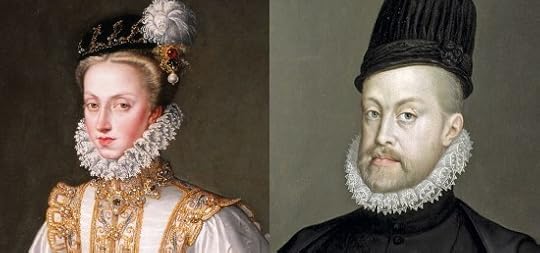 (public domain)
(public domain)Anna of Austria was born on 2 November 1549 as the daughter of the future Maximilian II, Holy Roman Emperor and Maria of Austria. Her future husband, Philip, was born on 21 May 1527, and there was thus an age difference of 22 years between uncle and niece. He had also been married and widowed three times before. His first three wives were Maria Manuela of Portugal (a double first cousin), Queen Mary I of England (a first cousin once removed) and Elisabeth of Valois. Anna married Philip in 1570, although Pope Pius V initially refused to give his dispensation due to consanguinity. He wrote that we “have seen the unhappy consequences of such first-degree marriages.”1 The Pope alluded to the supposed insanity of Philip’s son from his first marriage. Philip himself wasn’t too happy about the marriage either, but he needed a new male heir following the death of his son. He then blackmailed the Pope by threatening to leave the Holy League, and thus, the dispensation was provided.
Anna fell pregnant the following year and gave birth to a son named Ferdinand on 4 December 1571. Four more children would follow: Carlos Lorenzo, Diego, Philip and Maria. Tragically, only Philip would survive to adulthood. Carlos Lorenzo died of an unspecified illness, while Diego died of smallpox. Ferdinand reportedly died of dysentery. Anna herself died of influenza shortly before her 31st birthday.
3. Queen Maria I of Portugal & King Peter III of Portugal
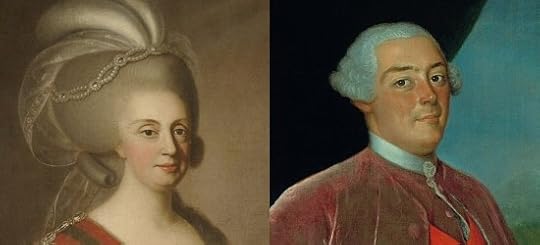 (public domain)
(public domain)The future Queen Maria I of Portugal was born on 17 December 1734 as the eldest daughter of King Joseph I of Portugal and Mariana Victoria of Spain. She was appointed Princess of Beira on the day of her birth. Her grandfather, King John V of Portugal, died in 1750, and as Maria had only living sisters, she became the heiress presumptive. As a Princess who was the heir could not marry a foreigner, Maria was married to her uncle. Peter was born on 5 July 1717 as the son of King John V of Portugal and Maria Anna of Austria. Their age difference was thus 17 years, and they married when Maria was 25 and Peter was 42. They had papal dispensation as was required.2 When Maria succeeded as Queen in 1777, Peter became her co-ruler. They went on to have seven children, of which four were either stillborn or shortlived. Nevertheless, It was a happy marriage; she referred to him as “my beloved uncle and husband” or “my uncle of my heart.”3
Peter died in 1786, and Maria spent much of the last part of her life in a complete mental breakdown. She died in 1816. Her eldest son, Joseph, who predeceased her, had married his aunt Benedita in 1777. They had no children together.
4. Maria Anna of Savoy & Prince Benedetto, Duke of Chablais
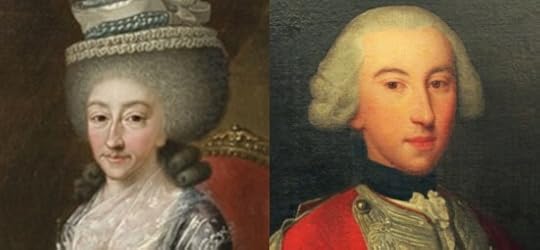 (public domain)
(public domain)Maria Anna of Savoy was born on 17 December 1757 as the daughter of the future King Victor Amadeus III of Sardinia and Maria Antonia Ferdinanda of Spain. Two of her elder sisters, Marie Joséphine and Marie Thérèse, married into the French royal family. Three of her brothers became King of Sardinia. Maria Anna married Prince Benedetto, Duke of Chablais, on 19 March 1775. He was born on 21 June 1741 as the son of King Charles Emmanuel III of Sardinia and Elisabeth Therese of Lorraine. They were thus 16 years apart in age. According to the Edinburgh Magazine, she respected her husband and considered him her uncle.4
They did not have any children together, and she was widowed in 1808. Maria Anne died on 11 October 1824.
5. Maria Isabel of Portugal & King Ferdinand VII of Spain
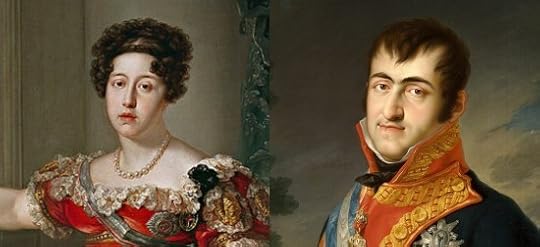 (public domain)
(public domain)Maria Isabel of Portugal was born on 19 May 1797 as the daughter of John VI of Portugal and his wife Carlota Joaquina of Spain. On 29 September 1816, Maria Isabel married her widowed maternal uncle, King Ferdinand VII of Spain. He was 13 years her senior, and his first wife Maria Antonia of Naples and Sicily had died in 1806 without having had any children, but she had suffered at least two miscarriages.
Maria Isabel fell pregnant quite quickly and gave birth to a daughter on 21 August 1817. Little María Luisa Isabel died at the age of four months on 9 January 1818. Maria Isabel became pregnant again not much later and went into labour on 26 December 1818. The baby was in a breech position, and the doctors soon realised that the child had died. Maria Isabel was thought to be dead as well. The doctors then began to perform a caesarian section to remove the dead fetus. She was revived by the pain and would die a few hours later in great pain.
Ferdinand went on to marry two more times. His third wife was Maria Josepha Amalia of Saxony, while his third wife was another niece, Maria Christina of the Two Sicilies, with whom he had two daughters.
Part two coming soon.
The post Five royal uncle-niece marriages (Part one) appeared first on History of Royal Women.
October 5, 2024
Book News Week 41
Book News Week 41 – 7 October – 13 October 2024
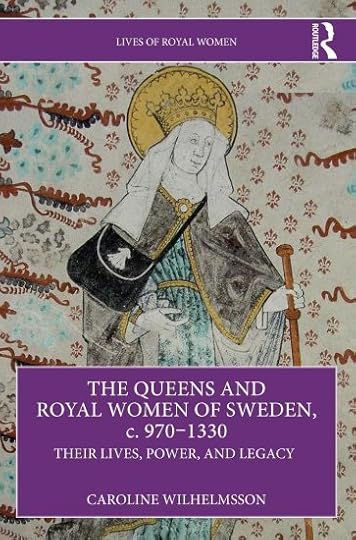
The Queens and Royal Women of Sweden, c. 970–1330: Their Lives, Power, and Legacy (Lives of Royal Women)
Paperback – 11 October 2024 (US & UK)
The post Book News Week 41 appeared first on History of Royal Women.
October 3, 2024
The Dutch Emerald Parure Tiara
The Dutch Emerald Parure Tiara is a versatile piece in the collection of the Dutch royal family.
The tiara was made in 1899 by Schürmann using emeralds which were already in the collection of the royal family. The order came from Queen Emma, who gave it to her daughter, Queen Wilhelmina, as a present. There were originally six emeralds in the tiara but two were taken off to create a pair of earrings in the 1950s.
Embed from Getty ImagesQueen Juliana had the tiara placed in the family’s jewel foundation, and it has been a much-loved piece since.
The emeralds can be swapped out for pearls and a diamond, and this version was worn by Annemarie Gualthérie van Weezel when she married Princess Irene’s son, Prince Carlos, in 2010. It can also be swapped to be all diamonds.1
Embed from Getty ImagesThe post The Dutch Emerald Parure Tiara appeared first on History of Royal Women.
October 2, 2024
The Year of Isabella I of Castile – Isabella of Aragon, the first-born daughter (Part two)
Tragedy struck on 13 July 1491 when Afonso was crushed underneath his stumbling horse. Isabella and her mother-in-law Eleanor rushed to be by his side, but Afonso never regained consciousness. He died three hours after the accident. Isabella was so grief-stricken that she cut off her hair and wore a veil that covered her face. She dressed in mourning clothes that she refused to change for forty days to chasten her body. She stopped eating almost completely and became frighteningly thin. This caused her to become quite ill, and she began to spend her days in a dark room with a single candle, reading only religious texts. She attended mass on a daily basis, receiving communion over and over again, and she began to believe she had displeased God in some way. Eventually, she became convinced that Afonso had died because Portugal had allowed “heresy to fester.”1
Her parents-in-law became concerned with her well-being and had her bed moved into their room so they could keep an eye on her. Queen Isabella wrote to her daughter, full of concern, and the contents of those letters were later described, “There is no one who, unless they had a heart of stone, could hear it without shedding many tears.”2 Queen Isabella asked her daughter to return home, and she came back devoutly religious and continued to starve herself. She also claimed that she would never marry again. For now, Queen Isabella allowed her daughter to become her companion, but letting her remain unmarried was probably never in the cards.
In 1495, Prince Afonso’s father died, and he was succeeded by his cousin Manuel, the very same man who had accompanied Isabella to Portugal for her wedding. Manuel had grown attached to Isabella during their time together and wanted to marry her. However, Queen Isabella offered her younger daughter Maria instead. Manuel refused, saying it would be Isabella or he would look further. Isabella’s parents asked her to renounce her mourning finally and to marry Manuel. However, Isabella insisted that she would never again “know another man.”3 The issue temporarily rested while the family focussed their attention on John and Joanna’s marriages.
In August 1496, Joanna left Castile to be married to Philip the Handsome, Duke of Burgundy, and the wedding took place on 20 October 1496. A few months after their wedding, Philip’s sister Margaret was sent to Castile to marry John. Their wedding took place on 3 April 1497, and Margaret was an instant hit at court. John adored his new wife to the concern of his doctors that he was exhausting himself in the bed chamber. Meanwhile, Queen Isabella continued to negotiate with Manuel for him to accept Maria, but he still refused, wishing only for Isabella. Eventually, Isabella agreed to the match, though she asked for as little festivities as possible. She also requested that Manuel would expel all the Castilian conversos (those who had fled from Castile to Portugal due to the Inquisition), and he agreed. He also agreed to expel Jews and Muslims. As her second wedding approached, it became clear that John was very ill. Manuel kept the news from her so that she would not delay the wedding, and they were married on 30 September 1497.
John accepted his fate readily, asking only that his parents take care of Margaret, who was pregnant. He died on 4 October 1497 – still only 19 years old. Upon receiving the news, Queen Isabella said, “God gave him to me, and He has taken him away.”4 The pregnant Margaret also fell ill, and Queen Isabella rushed to nurse her back to health. Nevertheless, the child she was carrying was born prematurely and died. This now left Isabella as the heir to the throne.
By the time Manuel and Isabella returned to Castile to be sworn in as heirs to Castile, she was pregnant. This was a relief for the Aragonese, who would have preferred a man to inherit. If Isabella had a son, he would inherit everything. While at Zaragoza to discuss this matter, Isabella went into labour and gave birth to a son on 23 August 1498. However, she was still very malnourished from all the fasting she had done, and she died within an hour of giving birth. A historian at court wrote to the Archbishop of Braga, “The mother [Queen Isabella] was large, while the daughter [Isabella] was so consumed by her thinness that she did not have the strength to resist the birth… Scarcely had the child emerged from her uterus than the mother’s spirit was extinguished… Despite this, let’s fix it so that this tragic tale ends with a (more) musical refrain. There is compensation for so much misfortune, an important lightener to such a deep pain: she gave birth to a son.”5
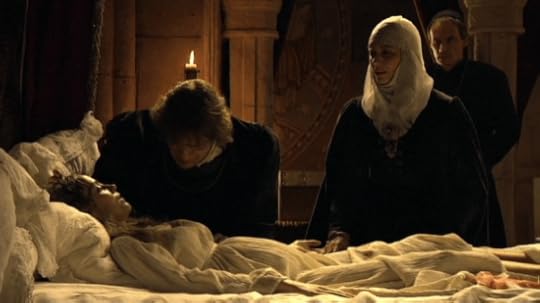 Isabella dying in childbirth as portrayed in Isabel (2012) (Screenshot/Fair Use)
Isabella dying in childbirth as portrayed in Isabel (2012) (Screenshot/Fair Use)Isabella asked to be buried dressed as a nun and to be interred at the Convent of Santa Isabel in Toledo. Queen Isabella held her daughter in her arms as she died.6 Isabella had reportedly foreseen her death in childbirth, and “she made sure that the final communion was well prepared and continually made priests come to her so that she could confess. And if, by mistake, she made some error, she would plead, weeping on her knees, to be given absolution.”7
Her son was named Miguel de la Paz, and he was granted Aragonese succession rights on top of the rights he had in Castile and Portugal. He was a sickly child and Manuel left him in the care of Queen Isabella while he returned to Portugal. On 19 July 1500, Queen Isabella held her young grandson as he, too, died. Isabella’s legacy had been extinguished.
The post The Year of Isabella I of Castile – Isabella of Aragon, the first-born daughter (Part two) appeared first on History of Royal Women.
October 1, 2024
The Year of Isabella I of Castile – Isabella of Aragon, the first-born daughter (Part one)
The future Queen Isabella I of Castile had made a daring choice by marrying the future King Ferdinand II of Aragon against the wishes of her half-brother King Henry IV of Castile and even proudly displayed the bloodstained sheets to the waiting officials after the wedding night. Isabella and her half-brother had a volatile relationship – with her taking the place as heiress presumptive over that over his daughter Joanna, who was believed to have been fathered by another man. Henry tried to marry her off several times, but in the end, Isabella made her own choice – and Henry was not amused.
Within months, Isabella was pregnant with her first child, and the opposing sides waited impatiently. A chronicler wrote, “It was awaited with extraordinary impatience… as importance was attached to the birth of a male child.”1 On 2 October 1470, the wait came to an end when Isabella gave birth to a daughter – also named Isabella. It had been a long and difficult labour, and Isabella had asked for a silk veil to be placed over her face so that the witnesses could not see her pain.2
A chronicler wrote, “I have been informed by the ladies who serve her in her chamber that, neither when in pain through illness nor during the pains of childbirth… did they ever see her complain, and that, rather, she suffered them with marvellous fortitude.”3 The birth of a girl was politically disappointing. Still, there is no evidence that Isabella was personally disappointed by the birth of a daughter.
As her mother fought for her throne, little Isabella was in the care of a governess and a wet nurse. She would remain in the nursery alone for quite some time. Her mother lost a baby in 1475, and it wasn’t until 1478 that her brother John was born. Her mother had succeeded as Queen of Castile on 11 December 1474, though the struggle with Joanna would continue for several more years. Young Isabella spent much of her childhood on campaign as the struggle continued. At the age of seven, she had once been left behind for her safety, only for the citizens of the town to rise up, leaving her trapped in a tower for several days until her mother came to her rescue. The following year, she was traded as a hostage to the Portuguese to ensure her parents would abide by the terms of the Treaty of Alcáçovas. She was sent to Portugal, and it was intended that she would marry King Afonso V’s grandson, also named Afonso, who was five years younger than her. She remained in Portugal for three years before returning home.
 Isabella of Aragon (public domain)
Isabella of Aragon (public domain)Between her mother’s accession and the birth of her brother, young Isabella was heir to the throne, and she was presented to the waiting crowds the day after Henry’s death. It is unclear why her mother appeared to have had trouble conceiving, but she had consulted physicians, prayed at sanctuaries, starved herself and engaged in self-mortification.
On 30 June 1478, John was born to great rejoicing – it was widely interpreted as a sign from God of his approval. For young Isabella, it meant that she was being displaced in the line of succession. Four more daughters followed: Joanna in 1479, Maria (and her stillborn twin) in 1482 and lastly Catherine in 1485. As Isabella and her siblings grew up, their mother monitored their education and began training them to rule. Her mother was known to have been an affectionate but stern mother, and she was devoutly religious. She expected nothing less from her offspring. Her mother was quite politically savvy, and public image was quite important. The splendour of the family’s clothing was soon the talk of Europe, with young Isabella appearing at an event in cloth of gold with a train of green velvet and a cap of “a net in gold and black, garnished with pearls and precious stones.”4
Despite having returned from Portugal, her marriage to Afonso remained on the cards, and several other marriages were also in the works. John and Joanna would marry siblings Margaret and Philip, the children of Maximilian I, Holy Roman Emperor and the late Mary, Duchess of Burgundy in her own right. Catherine was betrothed to Arthur, Prince of Wales, while Queen Isabella was eyeing the future King James IV of Scotland for Maria.
At the age of 20, Isabella’s marriage to the 15-year-old Afonso finally took place. The two had gotten to know each other well in the three years that Isabella had spent in Portugal. Isabella was accompanied to Portugal by her Portuguese cousin Manuel, who would also play an important part in her life, though she did not know it yet. Isabella was enthusiastically received by the Portuguese people, and it “truly seemed the earth trembled.”5 The wedding took place on 25 November 1490 in Évora with many celebrations planned for the following weeks. It appeared that both parties were happy to be married.
Part two coming soon.
The post The Year of Isabella I of Castile – Isabella of Aragon, the first-born daughter (Part one) appeared first on History of Royal Women.
September 29, 2024
The Year of Isabella I of Castile – Queen Isabella’s half-sisters
While the future Queen Isabella I of Castile was the first-born daughter of the marriage between King John II of Castile and Isabella of Portugal, she had three short-lived half-sisters from her father’s first marriage to Maria of Aragon. She also had one full brother, the future King Henry IV of Castile, and one half-brother, Alfonso.
On 5 October 1522, Maria of Aragon gave birth to her first child, a daughter named Catherine. Although it was still expected that the couple would eventually have a son, it was decided to have young Catherine sworn in as Princess of Asturias. Sometime at the end of January or beginning of February 1423, this ceremony took place in Toledo. All the nobles kissed the hands of the little infant as the proud parents looked on. The first to do so was the future King John II of Aragon.
On 10 December 1423, Maria of Aragon gave birth to a second daughter, Leonor.1
Tragedy struck on 10 September 1424 when Catherine died suddenly at the royal palace of Madrigal. It is not clear what the cause of death was. Little Catherine was buried at Madrigal de las Altas Torres.
Even though Queen Maria was several months pregnant, the King moved quickly to have Eleanor sworn in as Princess of Asturias in the same ceremony as Catherine had been. She held the title for just a few months as the future King Henry IV was born on 5 January 1525. He was sworn in as Prince of Asturias in April 1425. In any case, young Eleanor would also not survive to adulthood as she died sometime in 1425.
Maria and John went on to have another short-lived daughter, Maria, in 1428. In the end, Henry was their only child to survive to adulthood. After the elder Maria’s death in 1445, John remarried Isabella of Portugal, with whom he had the future Queen Isabella I and Infante Alfonso.
The post The Year of Isabella I of Castile – Queen Isabella’s half-sisters appeared first on History of Royal Women.
Princess Theodora’s historic veil
Princess Theodora of Greece and Denmark combined the Khedive of Egypt Tiara with a historic veil.
Embed from Getty ImagesThe unique lace veil has been in the family for over a century and was worn, among others, by four Queens.
It was Princess Margaret of Connaught who first wore the Carrackmoss lace veil for her wedding to the future King Gustaf VI Adolf of Sweden. The veil features lilies, shamrock and meadowseet.
Embed from Getty ImagesThe next royal bride to wear it was Princess Margaret’s daughter Ingrid when she wed the future King Frederik V of Denmark in 1920. Ingrid’s daughter, Princess Anne-Marie, wore the veil in 1964 when she married King Constantine II of Greece. Another one of her daughters, the future Queen Margrethe II of Denmark, wore it to her 1967 wedding to Henri de Laborde de Monpezat.
Embed from Getty ImagesEmbed from Getty ImagesEmbed from Getty ImagesBefore Princess Theodora, the last royal bride to wear it was the future Queen Mary of Denmark, who wore it during her 2004 wedding to the future King Frederik X.
Embed from Getty ImagesPrincess Theodora is the youngest daughter of the late King Constantine II of Greece and Queen Anne-Marie. She married her fiance, Matthew Kumar, on 28 September 2024 in the Metropolitan Cathedral of Athens. Her brother, Pavlos, Crown Prince of Greece, walked her down the aisle.
The post Princess Theodora’s historic veil appeared first on History of Royal Women.
Princess Theodora’s Wedding Tiara – The Khedive of Egypt Tiara
When Princess Theodora of Greece married her American fiancé, she did so in a familiar tiara.
The Princess donned the Khedive of Egypt Tiara like her mother, Queen Anne-Marie and sister, Princess Alexia, before her. The tiara was also worn by Theodora’s maternal aunt, Queen Margrethe of Denmark, at her 1967 wedding.
The heirloom tiara features diamond scrolls and can be worn as a large brooch or in the more popular diadem form. The scrolls are made of laurel branches with large diamonds set in the centre of each.
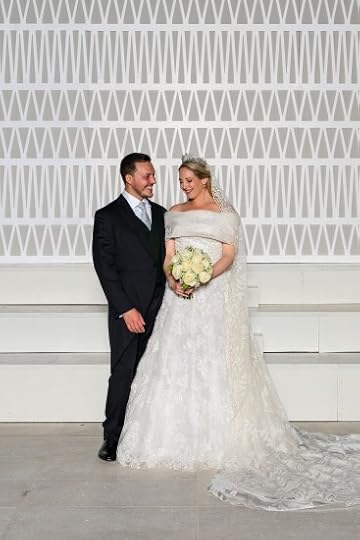 Nikolas Kominis / Studio Kominis
Nikolas Kominis / Studio KominisThe diamond scroll tiara made its way to Europe as a wedding gift from the Khedive of Egypt to Princess Margaret of Connaught for her wedding to Prince Gustaf Adolf of Sweden in 1905.
Margaret died at the age of 38, and her ten-year-old daughter, Ingrid, inherited her jewels. Princess Ingrid wore it for royal events at home in Sweden and took it with her to Denmark when she married King Frederik IX. Queen Ingrid wore it many times throughout her life and loaned the Khedive of Egypt Tiara to family members for various events.
Embed from Getty ImagesHer daughters, the future Queen Margrethe of Denmark, wore it for her 1967 wedding and Queen Anne-Marie donned it for her 1964 nuptials in Greece. Of course, when it came time for Princess Benedikte to wed in 1968, she also wore her mother’s tiara.
Upon Queen Ingrid’s death in 2000, her youngest daughter, Queen Anne-Marie of Greece, inherited it. The tiara has been worn by Anne-Marie’s nieces (the daughters of Princess Benedikte) and her eldest daughter, Princess Alexia.
Embed from Getty ImagesNow in 2024, Princess Theodora added her name to the long list of royal ladies who wore the tiara for one of the most important days of their lives.
The post Princess Theodora’s Wedding Tiara – The Khedive of Egypt Tiara appeared first on History of Royal Women.
September 28, 2024
Book News Week 40
Book News week 40 – 30 September – 6 October 2024
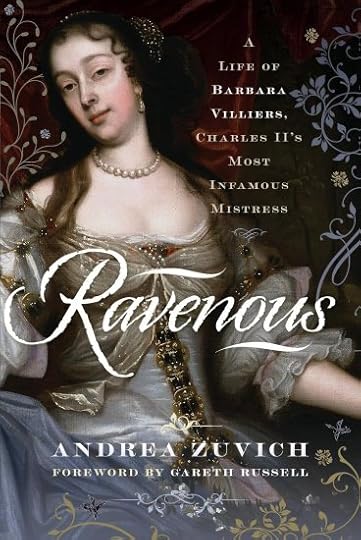
Ravenous: A Life of Barbara Villiers, Charles II’s Most Infamous Mistress
Hardcover – 30 September 2024 (US)
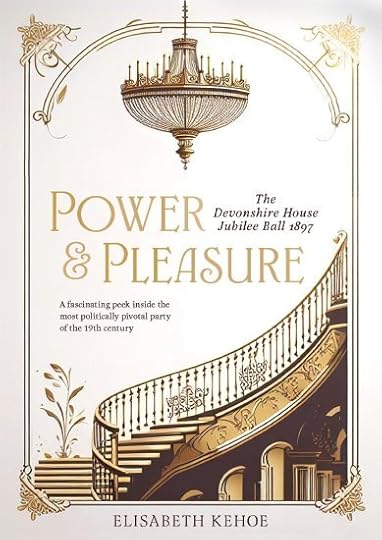
Power & Pleasure: The Devonshire House Jubilee Ball 1897
Hardcover – 1 October 2024 (UK)

Royal Seals: Images of Power and Majesty (Images of the the National Archives)
Paperback – 30 September 2024 (UK)
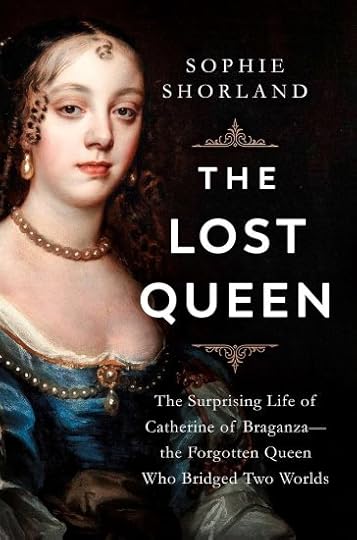
The Lost Queen: The Surprising Life of Catherine of Braganza―the Forgotten Queen Who Bridged Two Worlds
Hardcover – 1 October 2024 (US)
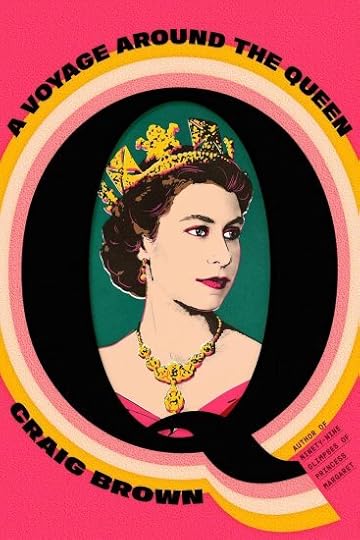
Q: A Voyage Around the Queen
Hardcover – 1 October 2024 (US)
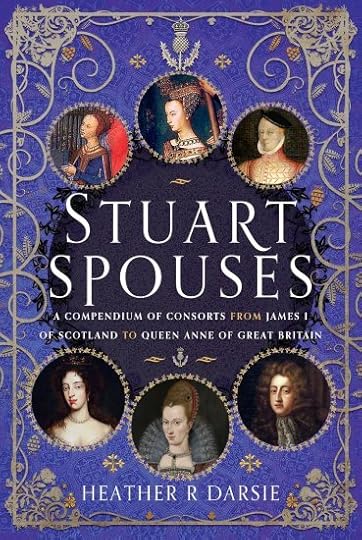
Stuart Spouses: A Compendium of Consorts from James I of Scotland to Queen Anne of Great Britain
Hardcover – 30 September 2024 (UK)

The Most Maligned Women in History
Hardcover – 30 September 2024 (UK)
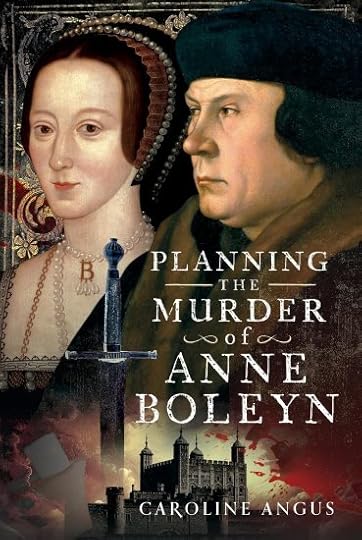
Planning the Murder of Anne Boleyn
Hardcover – 30 September 2024 (UK)
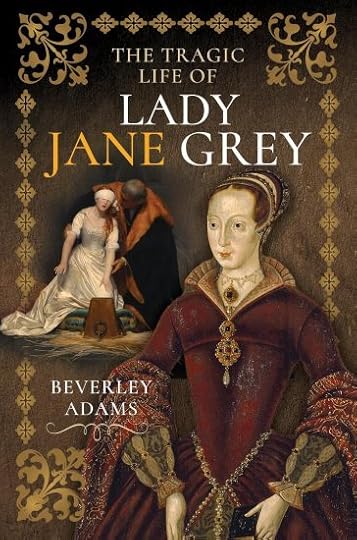
The Tragic Life of Lady Jane Grey
Hardcover – 30 September 2024 (UK)
The post Book News Week 40 appeared first on History of Royal Women.
September 27, 2024
Queen Bo Ying – The Queen who saved herself from attempted rape
Queen Bo Ying was Queen to King Ping of Chu. She was the mother of King Zhao of Chu. Yet, Queen Bo Ying has been praised for being able to prevent a conquering King from raping her.[1] Queen Bo Ying has been praised for being a faithful and devoted Queen to King Ping of Chu.[2] However, historians have also praised her intellect and courage in fighting her would-be rapist, King Helu of Wu.[3]
Queen Bo Ying was born sometime in the sixth century B.C.E.[4] She lived during the Spring and Autumn period, which lasted from 771 to 453 B.C.E. During this period, Chinese states were declaring their own independence from the ruling Zhou Dynasty to form their own dynasties.[5] She was a Princess of Qin.[6] She was from the Ying clan.[7] Historians believe her father was most likely Duke Ai of Qin.[8]
Princess Bo Ying married King Ping of Chu. Bo Ying became Queen of Chu. She gave birth to a son named Prince Zhao.[9] In 516 B.C.E., King Ping of Chu died. In 515 B.C.E., Prince Zhao became King of Chu.
In 506 B.C.E., King Helu of Wu attacked Ying (Chu’s capital city).[10] King Zhao of Chu fled to Qin. King Helu of Wu attempted to rape Queen Bo Ying.[11] However, she took a knife and fought him. She even threatened to kill herself for chastity.[12] She also scolded King Helu of Wu for abandoning his principles.[13] King Helu of Wu was so ashamed of his actions that he imprisoned her in the women’s quarters for a month.[14] King Zhao of Chu finally rescued her.[15] He brought reinforcements from Qin to Chu. This forced King Helu of Wu to leave Chu.[16] Queen Bo Ying’s death is unknown because ancient chroniclers do not mention her after her attempted rape.[17]
Queen Bo Ying has gained the admiration of Confucian scholars because of her courage in fighting her would-be rapist and lecturing him on morality.[18] However, Queen Bo Ying proved that she was also intelligent as well as chaste.[19] She used her intellect to capably handle her situation against sexual violence.[20] While there is not enough information known about her, it is clear that she was a bold Queen.[21] In Biographies of Eminent Women, Queen Bo Ying is categorized under “Biographies of the Chaste and Obedient.” [22] Thus, she has continued to be admired for her courage and determination against sexual violence for over two thousand years.
Sources:
Cook, C. A. (2015). “Bo Ying, Wife of King Ping of Chu”. Biographical Dictionary of Chinese Women: Antiquity Through Sui, 1600 B.C.E. – 618 C.E. (L. X. H. Lee, Ed.; A. D. Stefanowska, Ed.; S. Wiles, Ed.). NY: Routledge. pp. 8-9.
Eno, R. (2010). 1.7. Spring and Autumn China (771-453). Indiana University, PDF.
Liu, X., Kinney, A. B. (2014). Exemplary Women of Early China: The Lienü Zhuan of Liu Xiang. United Kingdom: Columbia University Press.
[1] Cook, 2015
[2] Cook, 2015
[3] Cook, 2015
[4] Cook, 2015
[5] Eno, 2010
[6] Liu & Kinney, 2014
[7] Liu & Kinney, 2014; Cook, 2015
[8] Liu & Kinney, 2014; Cook, 2015
[9] Liu & Kinney, 2014
[10] Liu & Kinney, 2014
[11] Cook, 2015; Liu & Kinney, 2014
[12] Cook, 2015
[13] Cook, 2015
[14] Cook, 2015
[15] Liu & Kinney, 2014
[16] Liu & Kinney, 2014
[17] Cook, 2015
[18] Cook, 2015
[19] Cook, 2015
[20] Cook, 2015
[21] Cook, 2015
[22] Cook, 2015, p. 8
The post Queen Bo Ying – The Queen who saved herself from attempted rape appeared first on History of Royal Women.



